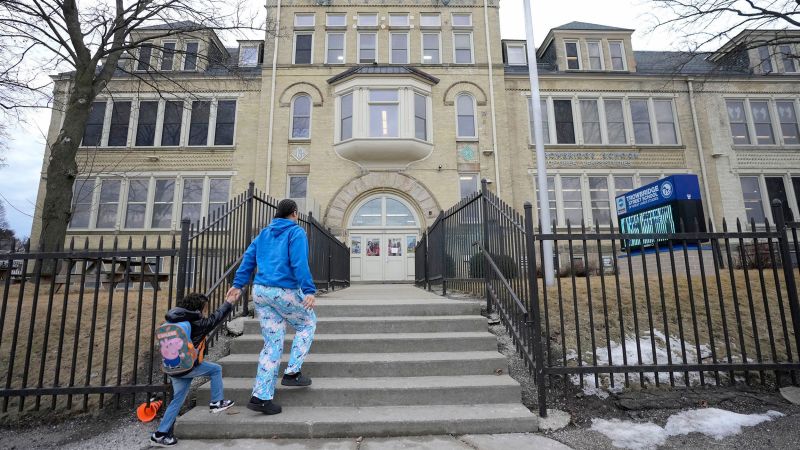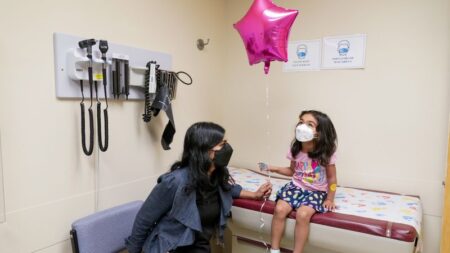Milwaukee is currently grappling with a significant health crisis related to lead exposure in its public schools, prompting the city to announce the temporary closure of additional educational institutions. As of Monday, two more elementary schools, Westside Academy and the Brown Street School, will cease operations while city officials intensify efforts to address the situation. This announcement follows the earlier closure of two other elementary establishments: the Starms Early Childhood Education Center and the LaFollette School, bringing the total number of impacted schools to nine this year.
This urgency arises after several incidents where elevated blood lead levels were detected in students, notably a case involving four children earlier this year. Reports have suggested that flaking and chalking paint in aging buildings is likely at the root of these elevated lead levels. To combat this, the school district has unveiled a comprehensive plan aimed at addressing the deteriorating condition of its properties. The initiative includes inspections of nearly 100 school buildings erected before 1978 — the year when lead was banned in paint. These inspections are anticipated to continue over the summer as the district strives to ensure a healthier environment for its students.
In order to effectively navigate the lead crisis, the district has initiated a risk assessment process. This begins with a visual inspection of each school building, classifying them into categories of low, medium, or high risk. Schools falling into the medium and high-risk categories will be subject to further lead testing, and plans may include full or partial closures for necessary abatement work. Additionally, a protocol is being developed to test adults who work in these environments, including janitorial staff who might also be at risk of exposure.
In response to the lead crisis, the city has focused on increasing the number of lead screenings for students. However, challenges have emerged — notably, the cutting of federal support from the U.S. Centers for Disease Control and Prevention (CDC), which had previously been aiding Milwaukee in establishing a testing strategy. The district’s request for EpiAid, which would involve short-term support from epidemiologists, was declined by the CDC. This decision is seen as rare but underscores the CDC’s currently limited capacity to assist Milwaukee in this dire need for expertise.
Political figures have taken notice of the crisis, with Wisconsin Senator Tammy Baldwin and Representative Gwen Moore urging the Department of Health and Human Services to restore the expertise at the CDC that is necessary for addressing the lead problem in Milwaukee schools. Their recent correspondence to Secretary Robert F. Kennedy Jr. expressed the critical need for immediate action from federal health officials to rectify the situation.
The crisis itself was highlighted after a child exhibited high lead levels, which led to a thorough environmental inspection that ultimately traced the exposure back to the child’s school — where significant sources of lead, including peeling paint and lead dust, were found. Historically, Milwaukee has contended with lead issues given its aging infrastructure, but this marks the first occasion where lead poisoning in children has been directly connected to the schools.
Despite the severity of the situation, there are recognized remedial strategies, such as properly sealing old lead paint, which can effectively reduce lead exposure. However, Milwaukee’s school district has struggled to keep pace with maintenance requirements. Earlier reports indicated that the district is facing over $265 million in deferred maintenance costs.
In line with addressing this health emergency, the district has encouraged parents to seek lead screening for their children, given that testing typically targets infants, while school-aged children often miss out on evaluations. To bridge this gap, the Milwaukee Public School District and the health department have initiated community clinics for lead testing. The next clinic is slated for May 7, generating much-needed opportunities for families to ensure the health and safety of their children amidst the ongoing lead crisis. The health department remains committed to providing as many resources as possible, despite the limitations posed by the withdrawal of federal support.












